Komodo & Sulawesi 2019: Into the Dragon’s Den
In common with so many, my introduction to Komodo came courtesy of David Attenborough. Zoo Quest for a Dragon was first broadcast in 1956 (well before I was born) and it took Sir David and the film crew some four months to reach the Indonesian island from the UK. Today, the journey is easily manageable in less than three days.
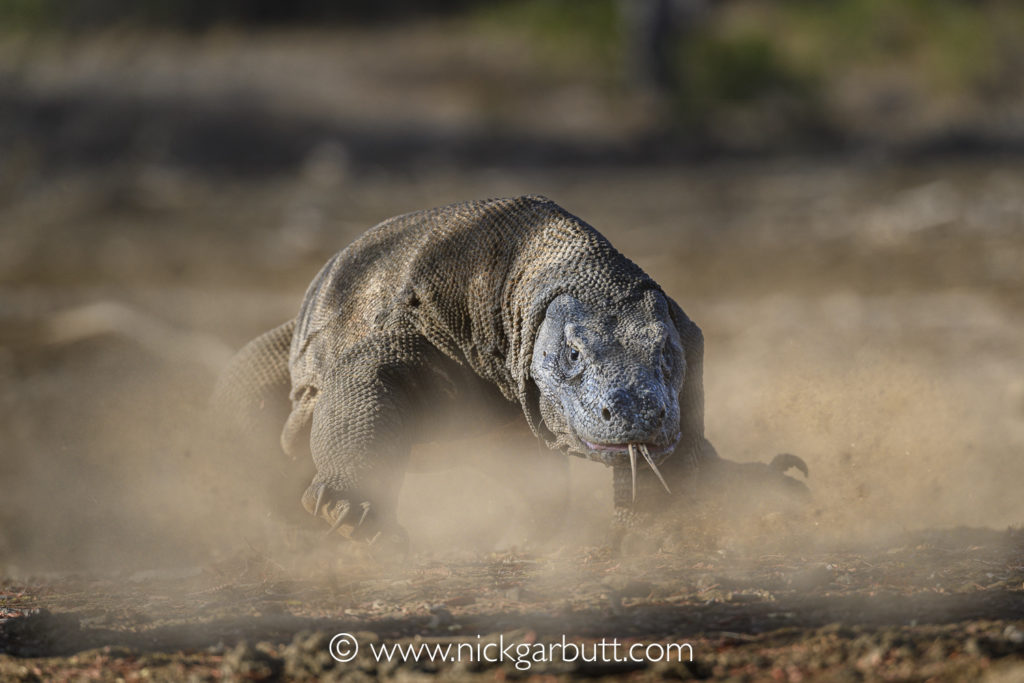
A magnificent Komodo dragon in full flight: their turn of speed is remarkable and slightly unnerving!
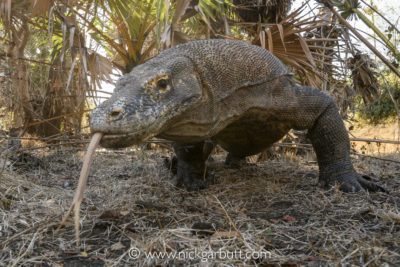
We encountered this dragon on our first morning and quickly had to defer to let it wander by
Seeing Komodo dragons, the world’s largest lizard, has been on my bucket list for some time, the ambition finally being fulfilled recently (September 2019) during a first photo tour to the Indonesian Archipelago.
On our first morning in the national park we visited the island of Rinca (Komodo dragons are actually found on four neighbouring islands, Rinca, Flores, Gila Motang and Komodo, with the latter being the largest) and the local ranger guides took us at first light, on a longer walk along a dry riverbed and then onto a hillside covered in parched grassland and dense bushes.
The first dragon took everyone by surprise, it rounded a corner walking towards us, and we almost walked into it. It was huge, easily 3m in length. We were forced to scurry backwards quickly to give it space. The swaggering, sinuous left and then right gait made its movement deceptively cumbersome, but we were all well aware of its capabilities and potential instant turn of speed. As it advanced its long, forked tongue flicked in and out repeatedly, constantly tasting the air and assessing its surroundings.
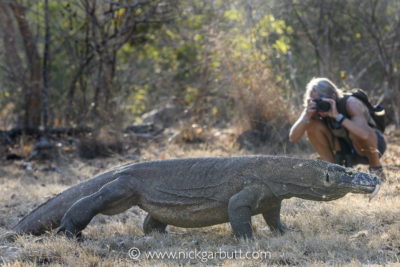
Photographing a large dragon at close quarters
The dragon moved off the path and began to climb the hillside towards the warming sun-bathed slopes. Then another large dragon appeared from further up slope and lumbered across a patch of open savannah. I felt as though I was looking through a window onto prehistoric scene, with the voice of Dickie Attenborough this time in my ears, “welcome to Jurassic Park”.
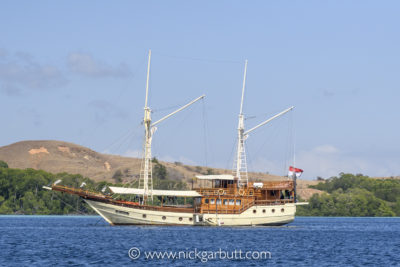
Our home for five nights while sailing around Komodo, Rinca and neighbouring islands
Staying aboard a very comfortable schooner (phinisi) proved to be the ideal way to visit the area allowing us flexibility to visit different sites on Komodo and neighbouring Rinca, both early morning and later afternoon, to maximise our possible encounters with dragons. This left plenty of time during the middle of the day to sail to different sites and snorkel around coral reefs and even swim with manta rays.
During an afternoon visit to a more remote site on Komodo, our guides took us inland from a mangrove-fringed lagoon and along the edge of a dry riverbed. We found two dragons, or more accurately they found us - one sprinted quickly out of cover into the open and directly towards us. The park guides, all carrying stout V-pronged sticks to make sure no dragon got too close, immediately indicated for us to retreat. We moved into the riverbed achieving a lower perspective and were then able to photograph the dragon at eye-level creating much more dramatic perspectives.
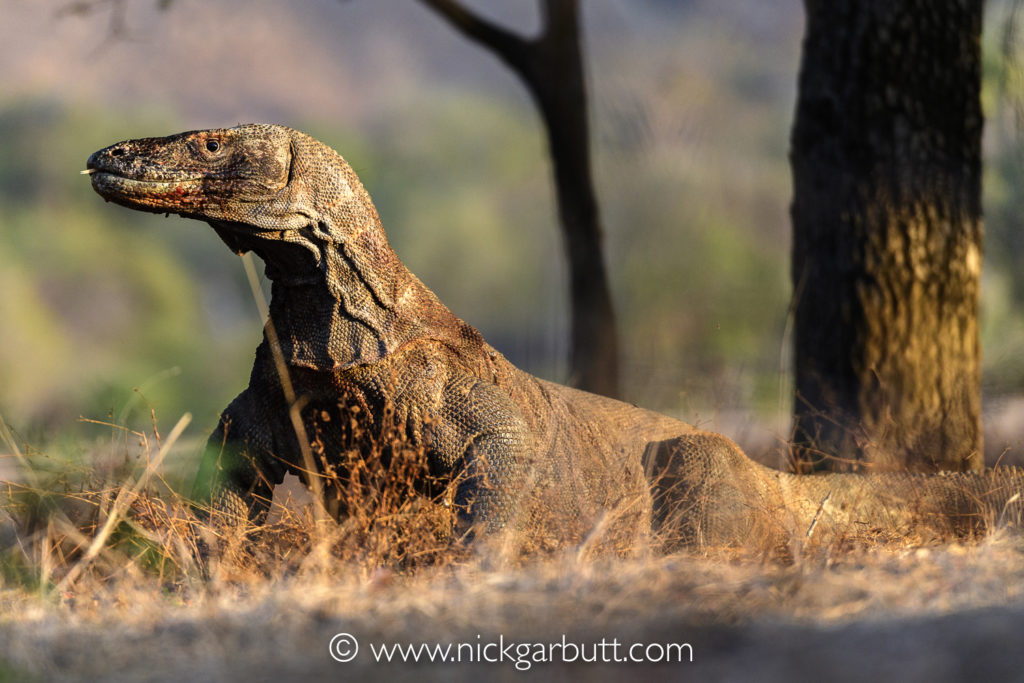
This very large dragon had just been feeding on a carcass
Lying due north of Komodo is the island of Sulawesi, also part of the vast Indonesian archipelago. This is arguably the world’s most biologically complex island and provides a perfect complimentary destination to Komodo. Resembling a squiggly character from an ancient Oriental script, what we now call Sulawesi (previously known as Celebes) was once four separate islands with disparate origins, hence the island’s fauna and flora comprises a mélange of species with affinities from South East Asia, Australasia and the Pacific region: there are monkeys and marsupials, civets and cockatoos, all sharing the same space.
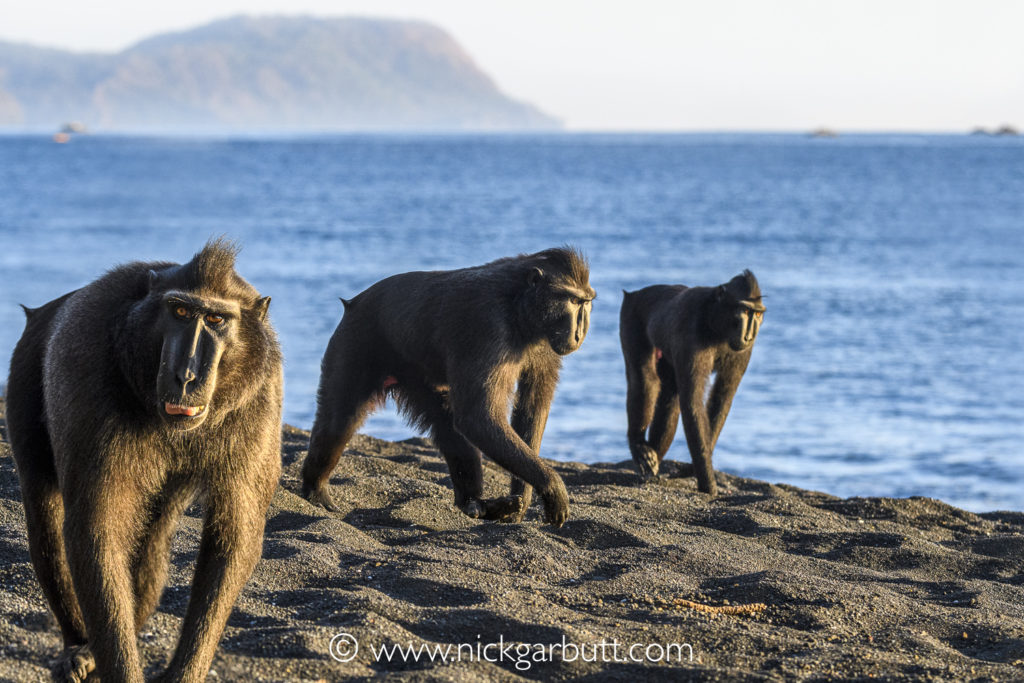
First thing in the morning, a troop of crested black macaques combs the beach in Tangkoko
Tangkoko National Park on the far north eastern arm of Sulawesi, provides the best and most varied introduction to the island’s wildlife. The park’s most recognisable resident is the endemic crested black macaque, infamous for its cheeky disposition, looking at itself inquisitively in mirrors and taking ‘selfies’.
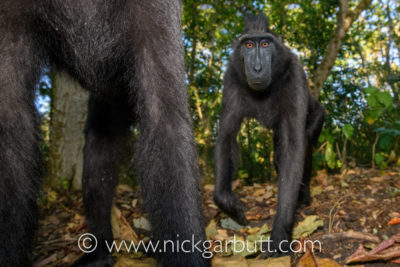
Always on the look out, the younger crested macaques can be particularly inquisitive
During the tour we were up before dawn each day hoping to catch the macaques at first light when they can often be found combing the black lava sand beach. We succeeded on a couple of occasions and were able to follow the troop along the shoreline as they foraged for morsels deposited by the most recent tide. After a period on the beach, the macaques retreated back into the forest to continue foraging, then sometimes would stop when they found a patch of fallen fruit or something similar. We could then sit amongst them, surrounded by a troop of fifty or more individuals as they picked through the leaf litter, groomed and played with one another, all of which provided wonderful intimate opportunities for photography.
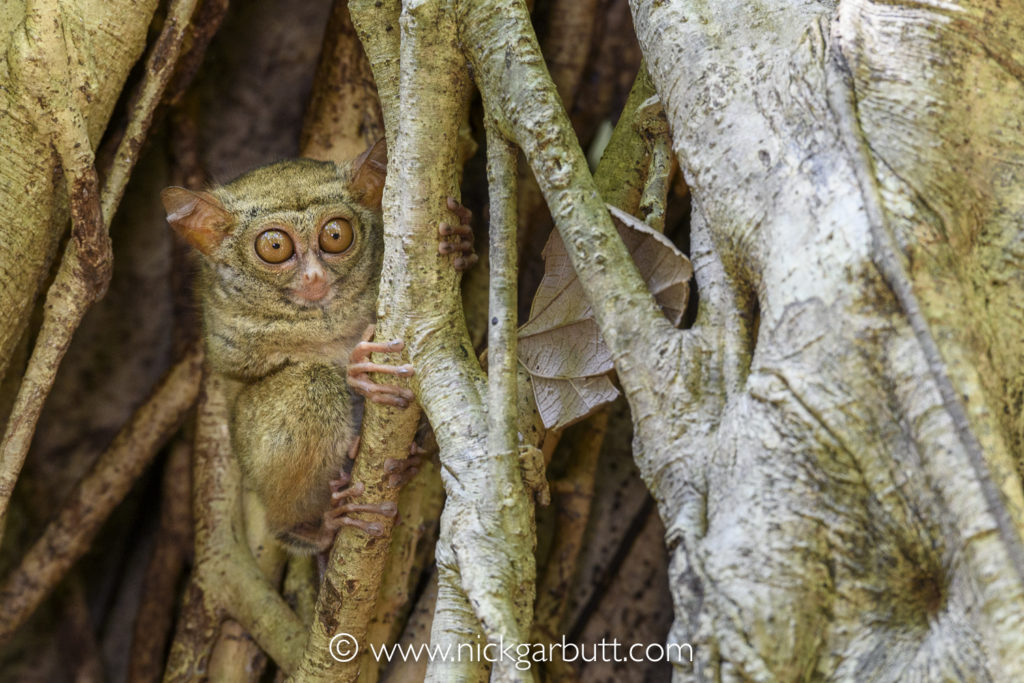
Although primarily nocturnal, the spectral tarsiers that sleep in one particular tree can often be seen during daylight
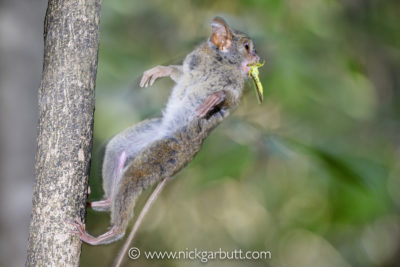
Spectral tarsiers are voracious hunters: this one has caught a bush cricket
In addition, Tangkoko is also an excellent place to see and photograph a number of other species. The spectral tarsier is a small nocturnal endemic primate with evolutionary alignment to South East Asia (other species of tarsier occur on the Philippines and Borneo). Rather resembling ‘Yoda-like’ gremlins, they are voracious hunters actively pursuing and catching large insects like bush crickets and mantids at night. During the day, the tarsiers sleep in tree holes, either singly or in small groups, and in Tangkoko there is one well known tree used routinely by three to five individuals. To see and photograph the tarsiers, it is simply a matter of staking out the tree late in the afternoon and waiting for the tarsiers to emerge sometime before dusk. We did this each afternoon and achieved some really worthwhile shots.
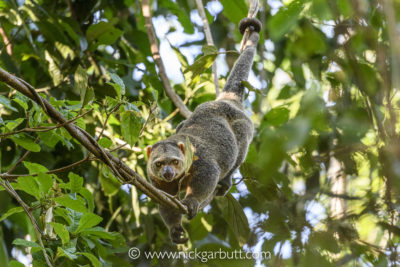
The bear cuscus is a peculiar marsupial with evolutionary affinities to Australasia: with luck it can be seen in Tangkoko
Our next photography tours combining Komodo and Sulawesi will be in August / September 2022. Two departures are planned with the group size is limited to 10. Bookings are now open and places are filling quickly on both departures.
